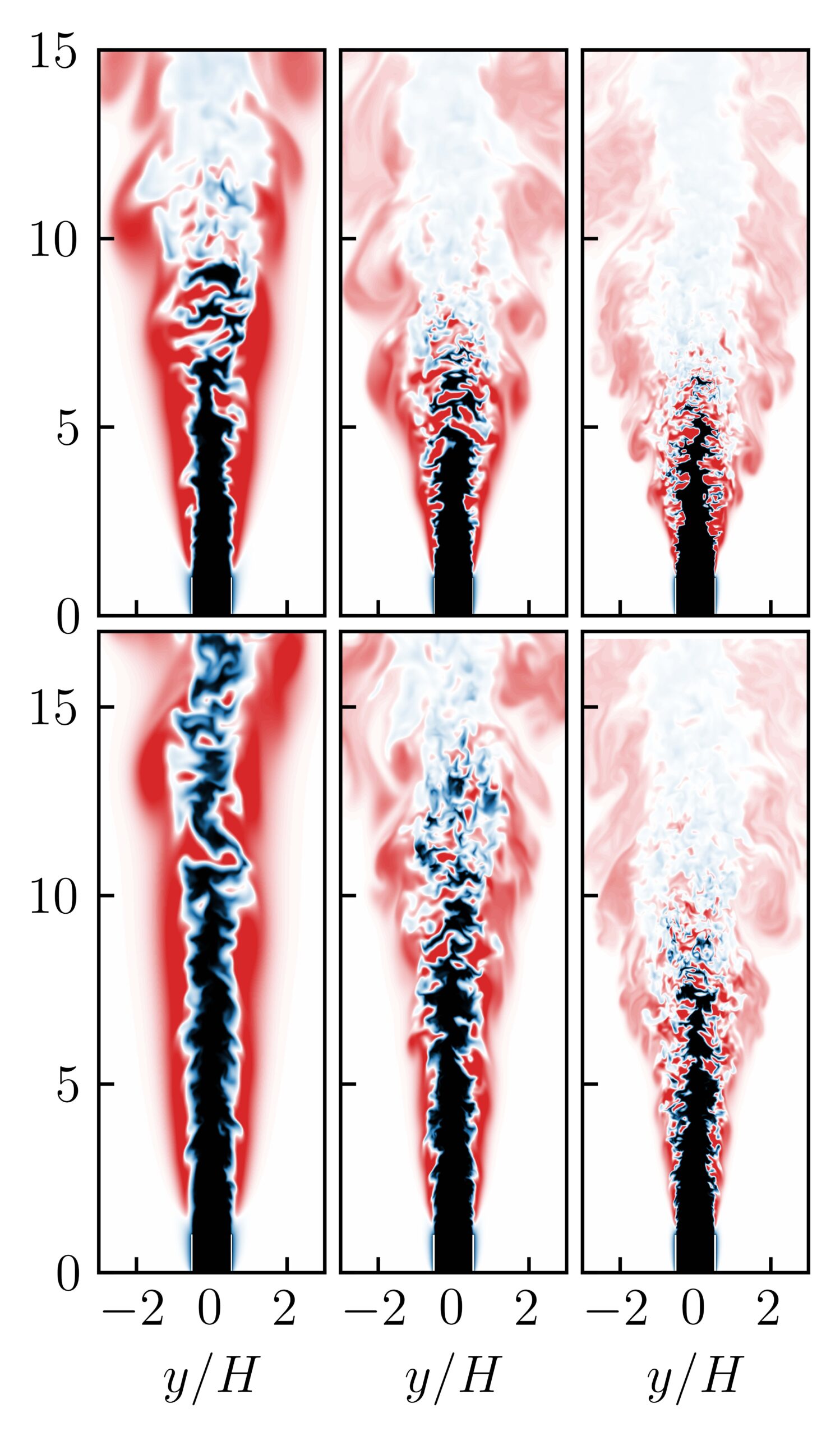Project
Massive-Parallel Direct Numerical Simulations of Turbulent Premixed Hydrogen/Air Flames with Thermo-Diffusive Instabilities
The shift towards hydrogen energy systems offers opportunities for decarbonizing thermochemical processes but presents challenges due to hydrogen’s distinct transport and combustion properties. Lean premixed hydrogen flames, which are preferred for hydrogen combustion to reduce nitrogen oxides (NOx) formation, are prone to thermodiffusive flame instabilities (TFI). These instabilities increase flame surface area and flame propagation speed, and significantly impact flame dynamics and heat release rates. In turbulent flames, it was observed that thermodiffusive instabilities interact synergistically with turbulence further enhancing turbulent flame speed and increasing heat release rates compared to laminar unstable flames. A better understanding of the physical mechanism behind these synergistic effects is required to model and predict hydrogen flames in technical applications such as gas turbines and industrial burners.
Project Details
Project term
July 1, 2022–June 30, 2023
Affiliations
RWTH Aachen University
Institute
Institute for Combustion Technology (ITV)
Project Manager
Principal Investigator
Methods
The objective of this project is to leverage high-fidelity direct numerical simulations of hydrogen flames to develop a quantitative understanding of the relevant physical principles governing hydrogen flames and to systematically derive combustion models. Direct numerical simulations (DNS) directly solve the governing equations for all relevant scales without relying on models for the turbulent motion. DNS provide detailed insights into the smallest scales of turbulent flames which is essential for the development of reliable combustion models. However, conducting direct numerical simulations requires significant computational resources and is possible only on supercomputers utilizing efficient parallelization strategies as well as precise and robust numerical methods. For this purpose, the massive-parallel high-fidelity code “CIAO” has been developed at the Institute for Combustion Technology. CIAO solves the reactive Navier-Stokes equations in the low-Mach number limit using arbitrary-order finite differences on a structured grid. Species and temperature equations are discretized by the WENO5 scheme to ensure bounded solutions and high numerical accuracy. To further improve the numerical accuracy, spatial and temporal staggering of flow variables is employed. CIAO is parallelized using MPI and has demonstrated an almost linear scaling up to 147,456 cores
Results
With the computing time on CLAIX, we have performed DNS of turbulent jet flames in a slot burner configuration. The resolution of the computational mesh was varied between 35 μm and 70 μm to understand the impact of the mesh resolution on the results. It was shown that a mesh width of 70 μm (this corresponds to 10 grid cells per flame thickness and two grid cells per Kolmogorov length scale) is sufficient for an accurate resolution of flame properties and turbulence statistics. These simulations have more than 20 Billion degrees of freedom.
Discussion
The DNS data provide highly resolved fields that enhance our understanding of the underlying physical principles and enable the development of predictive combustion models for thermodiffusively unstable flames. Although such models are currently unavailable, they are essential for progressing the transition of energy systems towards hydrogenbased fuels.
Additional Project Information
DFG classification: 404-03 Fluid Mechanics, 404-01 Energy Process Engineering
Software: CIAO
Cluster: CLAIX
Publications
Niclas Kalter, M. Sc.,
Large Eddy Simulations of Premixed Hydrogen-Methane JetFlames UnderVarious Operating Conditions
Svenja Nerzak, M. Sc.,
Numerical Analysis and Model-Based Optimization of a Fuel-Flexible Burner by Means of Scale-Resolving Simulations
 Figure 1: Temperature field of premixed hydrogen flames at different Reynolds and Karlovitz numbers.
Figure 1: Temperature field of premixed hydrogen flames at different Reynolds and Karlovitz numbers.